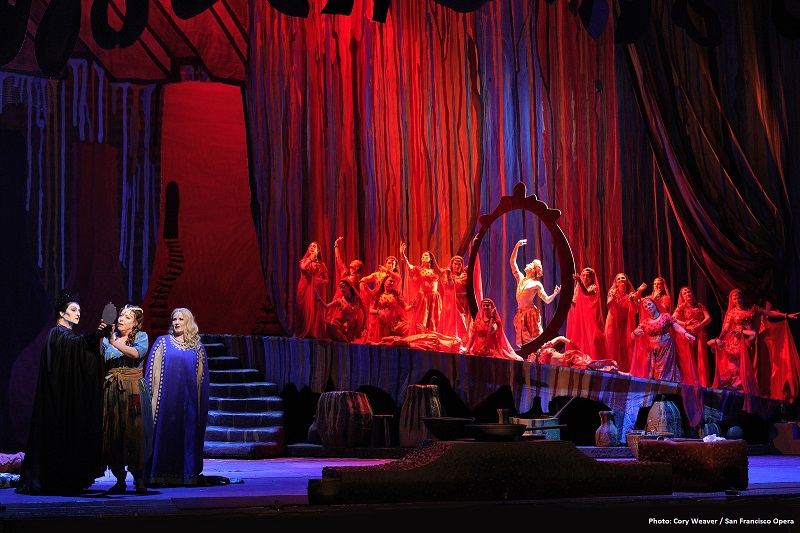
AN OPERA COLOSSUS AND SPLIT-LEVEL DRAMA
Too bad composer Richard Strauss has fallen out of favor these days, given his great work in both opera and tone poems.
Happily, for its centennial year the S.F. Opera has revived the spectacular fairy tale for adults, “Die Frau ohne Schatten” (The Woman without a Shadow), for which a crowd of critics congregated from near and far for the June 4 opening. This may well end up the superior operatic experience of 2023, just in time for the troupe’s gala anniversary.
Imagine a fairy-tale setting featuring an Imperial couple, apparition figures, a singing falcon, magic, and a trip to Hell—- but with a modern-day twist: The dominant figure is the lowly Dyer’s wife, slogging thru life like a small-town Hausfrau with sycophantic relatives and a deeply cleft marriage. Out of this improbable plot, Strauss and librettist Hoffmansthal created a great split-level drama extolling conjugal love and child-bearing on a plebian level.
Despite the unwieldy array of 11 scenes, this was their grandiose but highly unlikely miracle, done musically on a Wagnerian scale with 206 performers on and off the SFO stage. It took a lavish co-production involving two other major companies to carry it out.
At the top was the twin-barrel stardom of Swedish soprano Nina Stemme and conductor Donald Runnicles, whose long-running rift with the SFO (over artistic control matters) has seemingly been stitched up, as the robust play of his augmented 96 instrumentalists underlined.
As the Dyer’s Wife, Stemme recalled her great Wagnerian predecessor and compatriot Birgit Nilsson, with her warm rafter-ringing tones and plausible theatrics ranging from argumentative and dismissive to loving. Her simply hand-to-face gesture conveys 1,000 words.
On any other night, the shadowless Empress of fellow Scandinavian soprano Camilla Nyland would have stolen the plaudits with her lucid and more lyrical tones, and dazzling outfits that did a lot of the acting. The Dyer Barak was played by the Dane Johan Reuter, a compelling figure whose tones reached the pinnacle in the finale.
If dazzling make-believe eye-candy is your thing, you had David Hockney no less doing designs of brilliance, with teams of master lighters and costumers. Stage Director Roy Rallo brought forth a sensitive amalgam of the human and the supernatural, with humanity triumphant.
The most memorable tune is the Dyer-and-wife love duet of the finale. Not far behind is the dissonant plunging act-one curse, “He’ll (The Emperor) Turn to Stone.” And did we mention the singing bird, the offstage special effects, and the remote chorus of unborn children?
THE OPERA HOUSE’S GREAT SECRET FOR THE POOR OPERA-LOVER—-Pay about $35 to sit in the top-most row of the balcony and hear the grand rush of sound comparable to the fabled Bayreuth Festival, particularly from the pit orchestra. The voices too are brighter than even in the $300 seats, thanks to the “acoustic-horn” amplification effect of the balcony floor converging with the ceiling. It takes a trudge up a flight of stairs, but well worth it.
STRAUSS’ “DIE FRAU OHNE SCHATTEN” at the San Francisco Opera, in German; three and three-quarter hrs., two intermissions. Opera House, S.F., repeats June 10, 20, 23, 28. For SFO info, www.sfopera.com.